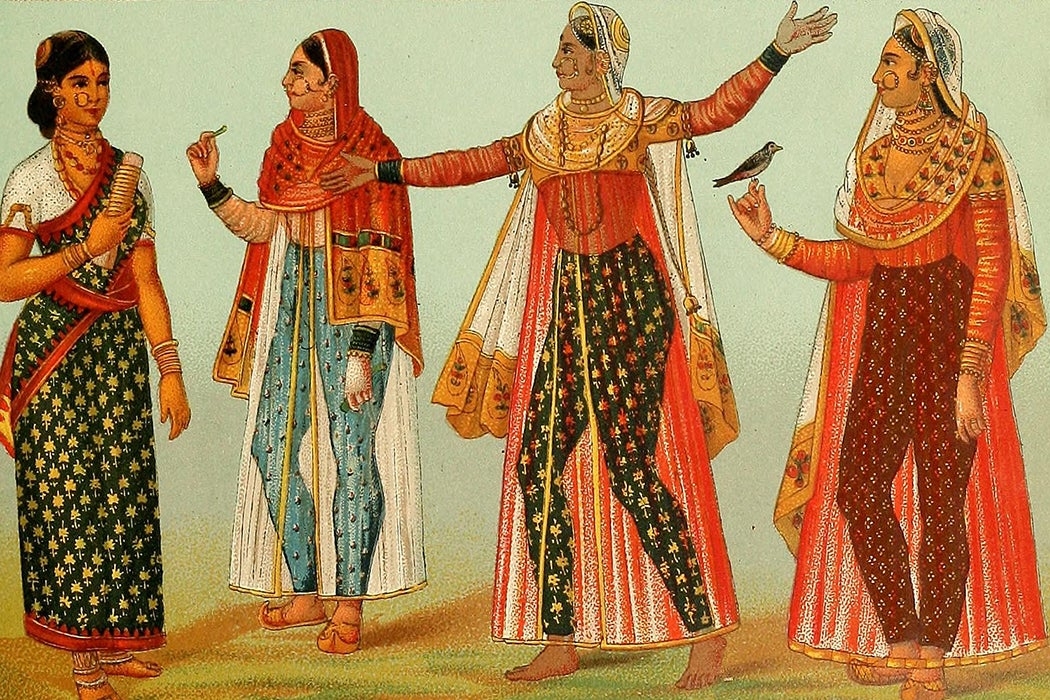India led the fashion industry in the sixteenth and seventeenth centuries, when Indian cotton fabric and design motifs swept the known world. From Africa to Europe and across the Atlantic, India became an influential player in the early modern textile market.
The key to India’s leadership of the early modern fashion world was cotton. Male and female artisans produced yarn and fabric—soft, finely-woven, colorful, painted, and printed. Savvy merchants sold it from Africa to Northeast Asia. Motifs of Hindu figures and indigenous Indian flowers became symbols of beauty and quality in Africa, Asia, and, somewhat later, in Europe and the American colonies.
Part of what made this possible was India’s customer-centric market system. India established a vibrant system of intra-Afro-Asian trade. From at least 1500, the Indian textile industry’s long chain of middlemen ensured an understanding of the end market. They transferred consumer feedback to production with such finesse that, for example, “consumer tastes in East Africa dictated the kinds of textiles that were brought to these markets.” That customer sensitivity paid off.
Early seventeenth-century French navigator François Pyrard de Laval found Indian textiles everywhere he went. “Every one from the Cape of Good Hope to China, man and woman, is clothed from head to foot in Indian cloth”, he said. All the more curious, the designs were not uniform. In fact, every market expected goods that met its own peculiarities (150 varieties sold in Southeast Asia alone) and refused those that didn’t. It was not a question of quality—skillful Indian weaving, dye fastness, and precise painted designs made Indian textiles the cream of the cream. Rather, it was about accepting the complexity of cultural demand. The Indian cloth industry—highly regionalized, highly specialized, and fully aware of its monopoly in the region—nevertheless manufactured according to demand.
Into this well-established, intra-Afro-Asian trade network came European merchants. First through Arab and Venetian middlemen and then directly, Europeans came to Asia primarily for pepper, cinnamon, nutmeg, and cloves. The Indonesian spice islands lured them. But European traders found that there was a set currency for buying spices in the spice islands; that currency was Indian cloth.
So European ships left the spice islands empty-handed, and went looking for traders to sell them Indian cloth. When they found some, they went back to the spice islands to buy spices with the cloth. And they soon learned that not just any cloth would do. They had to learn who valued what. Using Indian cloth as currency meant learning about intra-Asian trade. Through cloth, India taught European traders its “preexisting Asian market system.”
The two large European trading syndicates—the Dutch VOC and the English EIC—made fortunes in Asia by selling Indian cotton. One little-known example is Burma. While procuring Indian cloth for their Indonesian spice trade, the VOC noticed that India monopolized the Burmese elite fabric market. But the low-end market was open. They quickly filled the gap. The VOC ended up controlling Burma’s low-end fabric market with Indian red yarn for the indigenous weaving industry and with the cheaper end of Indian cloth, for half of the seventeenth century.







